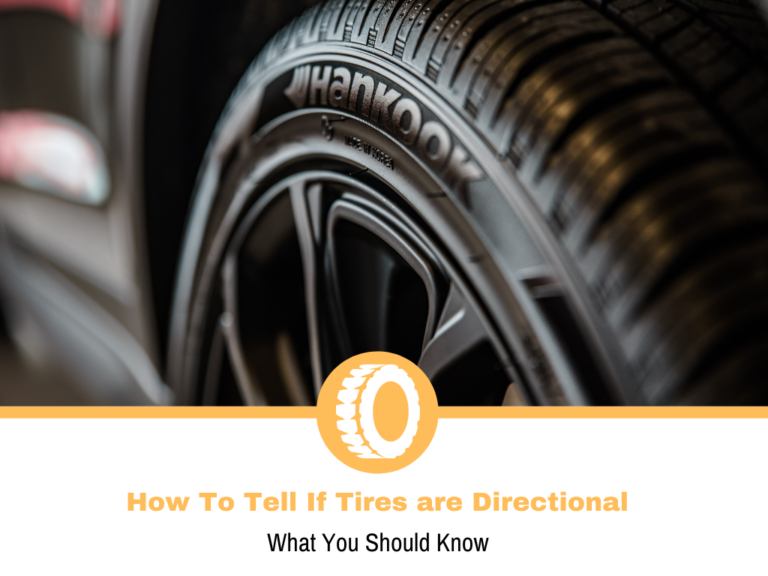How Many Times Can a Tire be Patched?
In an ideal world, we would buy a car, drive it without issues and live a happy life. Unfortunately, things aren’t perfect, and there are some unexpected situations. With cars, they can range from minor inconveniences to larger ones.
When it comes to tires, there aren’t too many issues you can face. Replace them regularly, rotate them at specific intervals, and you’ll be good to go. With that said, there is that one minor problem called puncture that can ruin your day.
Regardless if it’s damage from wear or a screw, a punctured tire is something you should address as soon as possible. Driving with a flat tire is a bad idea, so you can fit a spare, use a repair kit or call a tow service.
The solutions here are temporary, and you’ll need to go to a tire shop unless you’ve called the “mobile” tire shop. Patching a tire is the best solution, as you’re getting back on the road without buying a new tire.
Some people aren’t as lucky as others and have found themselves multiple times in this situation. This also raises the question: how much can you patch a tire before it comes un-patchable?
How Many Times Can a Tire be Patched?
There isn’t an exact number for this question, as many variables exist. Most tire shops will recommend patching a tire if the distance to the closest previous patch is less than 16 inches. Whenever there is a puncture, the tire’s structural integrity is compromised, so it will be unsafe to drive at a certain point.
Why Do Tires Get Patched?
The reason is obvious, but let me explain it with an example. You buy a new set of tires, drive a mile, and run over a screw or a piece of glass. Patching is an excellent way to avoid paying for a new tire after paying for a new set. Naturally, this also applies to older tires, but it’s a good example to get an idea.
Patching tires isn’t a new invention, but it has evolved significantly over the past century. Even in the early days, the idea was to spare you from buying a new tire. With that said, not all damages can be patched. Sidewall punctures or some larger holes in the tread pattern are unfixable.
Since we’re not talking about extreme situations, I’ll put those examples aside and look at tires that can be patched and explain how the process goes.
How Do Tires Get Patched?
One of the main reasons you won’t be able to patch a tire at home is that it needs to come off from the wheel. For this procedure, a tire shop has all the necessary tools.
Everything starts with identifying where the puncture is. If it’s a smaller puncture, the technician will leave the tire on the wheel and spray water to see where the bubbles are coming from. Alternatively, if you know, you can point that out. These are cases where the puncture is clearly visible, so there’s no need for inspection.

The next step is to clean the hole and buff out the inside part. Technicians don’t use any kind of special magic tools, but they know the process and how much they can work on the area. Once the hole is clean, it’s time to patch things up.
During the last steps, the hole gets plugged, and vulcanized cement is applied to the inner side of the tire. The technician applies the patch on the inner side of the tire and waits for things to dry off. The tire goes back on the wheel after the excess plug is removed. A final step involves checking the tire for air leaks, and if that’s good, the wheel goes back on the car.
To be fair, the process is a bit more complex than this, but for the sake of this guide, this is all the info you need to know. Also, holes larger than 1/4″ are unfixable, but your mileage may vary.
How Many Times Can a Tire be Patched?
There isn’t a specific answer to this, at least not a number anyone can give you, because each situation is different. The good news is that a tire can have multiple patches, but the bad news is that there is a limit to that.
Tire shops say two patches should be at least 16 inches apart. When a tire gets punctured, the structural integrity weakens. A small screw may seem negligible but don’t forget that the tire endures tremendous amounts of force. Having some kind of damage compromises it.
Two patches shouldn’t be closer than 16 inches because you avoid driving with a risky tire. Two punctures close to each other mean two holes in the internal construction. As a result, the tire may tear itself apart from all the forces it receives.
As for the exact number of patches, you can have on a tire, it’s impossible to say. The main reason for this is the surface area of the tread. A 13-inch tire will have a smaller surface area than a 17-inch one, meaning it would “handle” fewer patches.

Despite the 16-inch rule, many tire shops wouldn’t be comfortable going for more than 2 or 3 patches, maybe 4 on in some rare instances. Anything more, and they’ll probably refuse to fix it and recommend getting a new one.
If you find yourself in this situation, you may be better off getting two tires. It sounds crazy, but hear me out. If the tires are already worn down, about halfway through the depth, putting a new tire on one corner means the performance won’t be balanced. The new tire will perform better, which you’ll notice in daily driving scenarios. On the other hand, if we’re talking about relatively newish tires, you may be fine with getting just one.
What About Tire Plugs?
It’s time to address the elephant in the room called plugs. If you go to any tire shop, the staff will offer the plug as an option, but I’m not a massive fan of it. Even though plugs work, they aren’t as long-lasting as patches. It’s more or less a similar approach as with a tire repair kit based on a plug.
You clean the hole, put the plug in, start inflating and pray that it holds. Unfortunately, it doesn’t hold for too long, and you’ll be back in the shop, asking for the patch.
The only advantage that plugs have is that it takes a few minutes. Even at a shop, a technician will plug the tire quickly, and it won’t cost as much as a patch. With that said, after several trips to the tire shop, you’ll realize that you should’ve gone with the patch in the first place.
How Long Can You Drive a Patched Tire?
As long as the tire is safe to drive on the road. I’m looking at this from the tread depth and age perspectives. A patched tire won’t be as good as new, you can be sure of that, but it will be good enough.
The patch works inside to prevent air from leaking out, while the plug holds the hole together as best as possible. If done correctly, it will last until you need to replace the tire, so you shouldn’t have any problems. With that said, I’ve seen some poor patching jobs, especially from people trying to do them at home. Therefore, I advise people to go to the experts. They will tell you if the tire is fixable and do a proper job.
Conclusion
A tire patch is an excellent way to save you some money and spare you from buying a new tire. As good as this sounds, it’s not ideal, and there are some limitations to what you can do and how much you can do it.
The first problem is for the technician to decide if the puncture is fixable. Larger holes are usually a problem, so you’ll get a recommendation to get a new tire. In terms of patches, as long as the distance between the patches is 16 inches, the tire shop should be able to fix the tire.
After a few patches, the tire’s structural integrity may be way too compromised to be safe for daily driving. This is why tire shops will probably advise you to replace the tire after a few patches.
Overall, patching tires is a good thing, but the limitations are there. If you’re lucky to never have to do it, enjoy being God’s favorite. As for the rest of us, we’ll try to avoid any more punctures in the future.






